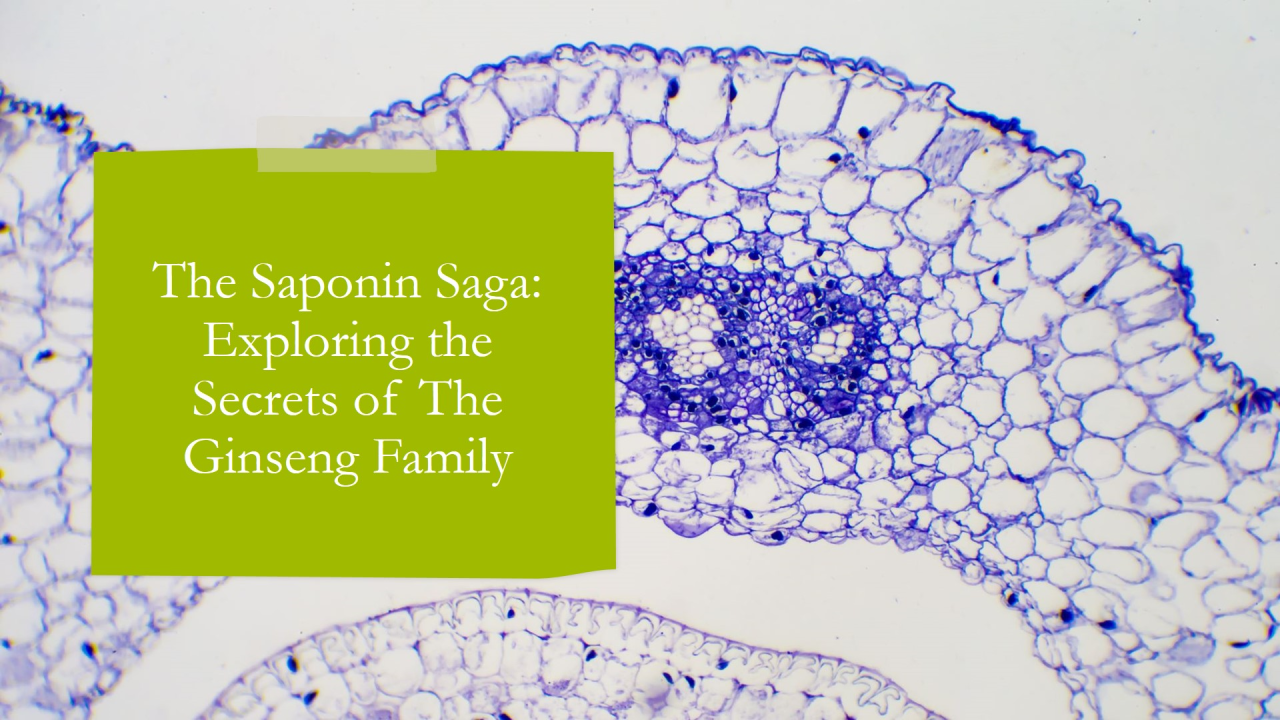
Exploring the Secrets of The Ginseng Family: The Saponin Saga
In the vast tapestry of botanical research, the story of saponins unfolds as a fascinating narrative, weaving through the history of traditional medicine to modern-day scientific innovations. Belonging to the Araliaceae family, plants like ginseng, Aralia, Dendropanax and Acanthopanax have been central to this tale, united by their rich saponin content. This essay delves into the intriguing world of saponins, exploring their discovery, diversity, and the groundbreaking research that continues to reveal their potential.
The Discovery of Saponins
The journey begins in the 18th century with the first reported identification of saponins in soapwort (Saponaria), named for their soap-like properties. However, it was the profound medicinal qualities of these compounds, particularly in plants of The Ginseng Family, that captivated scientists' and herbalists' attention.
The Diversity and Potency of Saponins
Over centuries, the variety of saponins identified across the plant kingdom has expanded significantly, with over a thousand variants now recognized. Among these, the saponins found in the Araliaceae family stand out for their unique chemical structures and remarkable bioactivities, including anti-inflammatory, immunomodulatory, and anti-cancer properties. Rare and potent saponins such as those in Panax ginseng (ginsenosides) and Acanthopanax senticosus have been extensively studied for their health benefits, illustrating the rich pharmacological tapestry of this plant family.
The Ginseng Family: A United Botanical Heritage
The Ginseng Family, or Araliaceae, represents a diverse group of plants bound by genetic and biochemical kinship, with saponins as their common thread. Referring to this family as The Ginseng Family not only highlights the iconic status of ginseng but also reflects the shared lineage and therapeutic potential of its members. This nomenclature evokes a sense of unity and familial bond, underlining the holistic approach to understanding plant-based wellness.
Recent Trends in Saponin Research
Current research on The Ginseng Family focuses on elucidating the specific actions of different saponins, their synergistic effects, and potential applications in cosmetics, food, pharmaceuticals, and veterinary medicine. Innovations in extraction and purification techniques have allowed for the isolation of specific saponins, enabling targeted studies on their functionalities and applications.
Applications Across Industries
The cosmeceutical industry has harnessed the antioxidant and skin-regenerative properties of saponins for anti-aging and skin-care products. In the food sector, saponins are explored for their nutritional benefits and as natural emulsifiers. Pharmaceutical research has focused on their therapeutic potentials, such as in anti-diabetic and cardiovascular medications. Similarly, veterinary medicine has seen the application of saponins in enhancing immunity and overall health in animals.
Future Directions and Innovations
The future of saponin research holds promising developments, including the exploration of plant cell culture technologies as a sustainable and efficient method of producing these valuable compounds. This approach not only promises a consistent supply of high-purity saponins but also opens the door to discovering new saponin variants with unique properties.
Conclusion
The Ginseng Family's saponins represent a bridge between ancient wisdom and modern science, offering a wealth of opportunities for enhancing health and well-being across various domains. As research continues to unravel the mysteries of these remarkable compounds, their applications in enhancing human and animal health, beauty, and nutrition are bound to expand, marking a new chapter in the saga of The Ginseng Family and its hidden treasures. For professionals in cosmetics, food, pharmaceuticals, and veterinary science, staying abreast of these developments is crucial for leveraging the potential of saponins in innovating products and solutions that cater to the evolving needs of society.